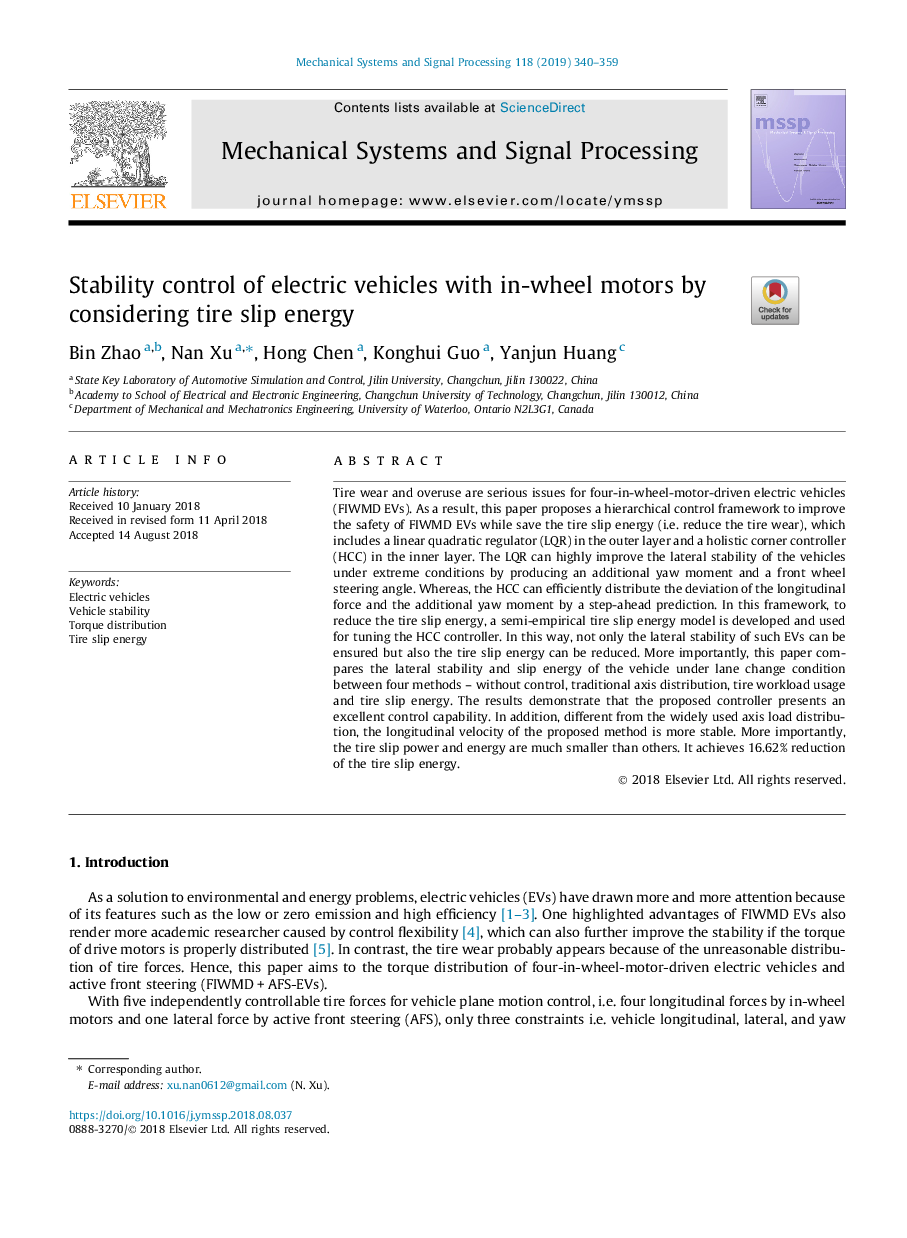| Article ID | Journal | Published Year | Pages | File Type |
|---|---|---|---|---|
| 10132864 | Mechanical Systems and Signal Processing | 2019 | 20 Pages |
Abstract
Tire wear and overuse are serious issues for four-in-wheel-motor-driven electric vehicles (FIWMD EVs). As a result, this paper proposes a hierarchical control framework to improve the safety of FIWMD EVs while save the tire slip energy (i.e. reduce the tire wear), which includes a linear quadratic regulator (LQR) in the outer layer and a holistic corner controller (HCC) in the inner layer. The LQR can highly improve the lateral stability of the vehicles under extreme conditions by producing an additional yaw moment and a front wheel steering angle. Whereas, the HCC can efficiently distribute the deviation of the longitudinal force and the additional yaw moment by a step-ahead prediction. In this framework, to reduce the tire slip energy, a semi-empirical tire slip energy model is developed and used for tuning the HCC controller. In this way, not only the lateral stability of such EVs can be ensured but also the tire slip energy can be reduced. More importantly, this paper compares the lateral stability and slip energy of the vehicle under lane change condition between four methods - without control, traditional axis distribution, tire workload usage and tire slip energy. The results demonstrate that the proposed controller presents an excellent control capability. In addition, different from the widely used axis load distribution, the longitudinal velocity of the proposed method is more stable. More importantly, the tire slip power and energy are much smaller than others. It achieves 16.62% reduction of the tire slip energy.
Related Topics
Physical Sciences and Engineering
Computer Science
Signal Processing
Authors
Bin Zhao, Nan Xu, Hong Chen, Konghui Guo, Yanjun Huang,
